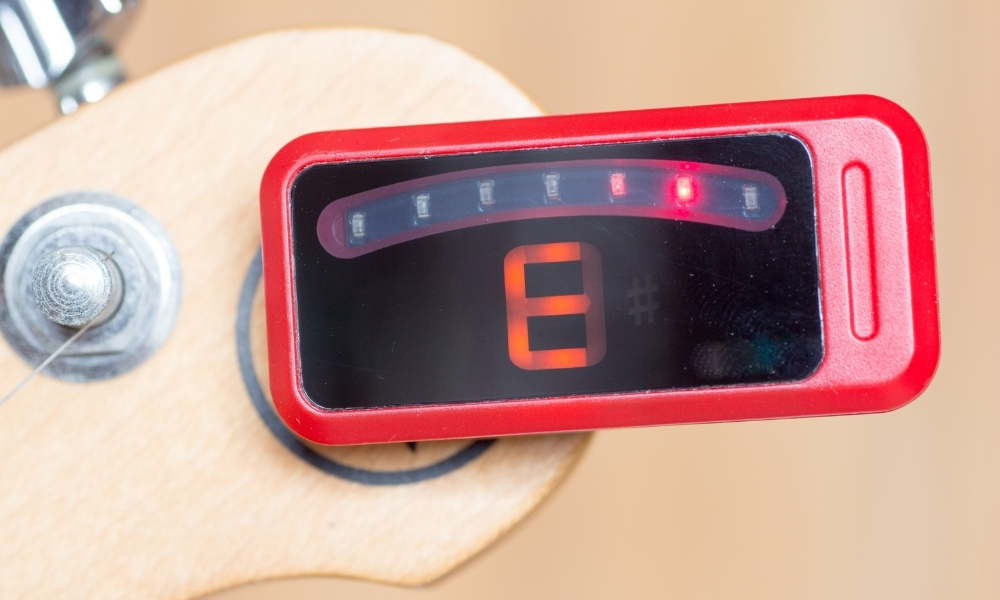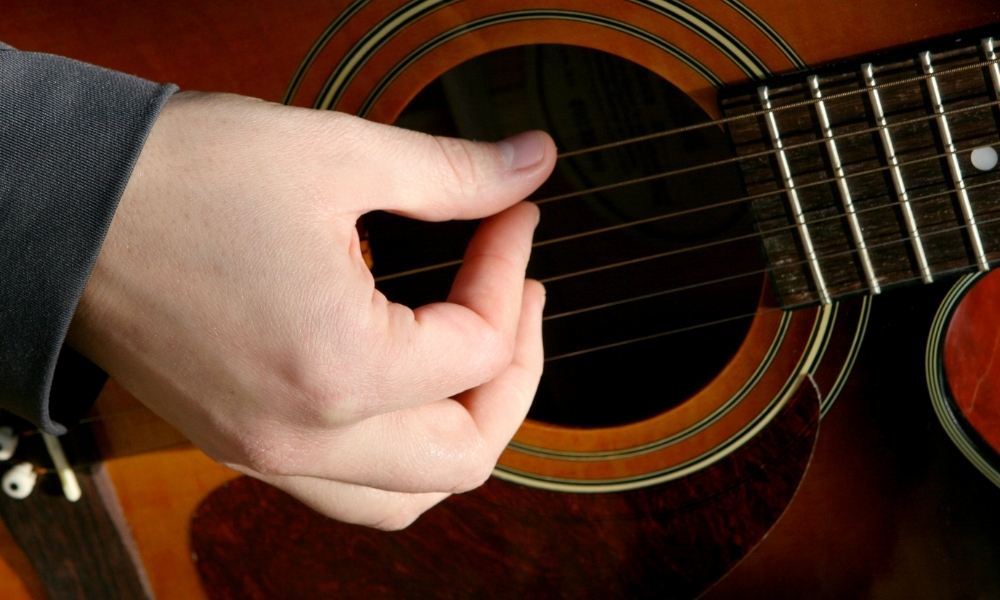Learning how to tune a guitar is one of the first lessons for a beginning musician. That new ax you got will get out of tune a lot, especially when it has new strings, so you’ll want to know how to tune it yourself. Don’t look at it as a chore, though, because it can be really satisfying to take an out-of-tune guitar and get it sounding great. The more you learn to play good music, the more you’ll get used to the sound of a tuned instrument – and the more you won’t be able to stand one that isn’t.
Players who just invested in a new guitar, just rented one, or who just need a refresher on tuning can read on to learn how. We’ll share some simple tips to make the guitar tuning process easy so you can make your instrument sound right. Soon you’ll know how to get it sounding sweet with just a few tweaks on the tuning knobs.
What Does Tuning a Guitar Do?

Tuning a guitar means adjusting how taut the strings are by using the built-in tuning knobs – also known as cranks, pegs, or machine heads – on the headstock at the top of the neck. Turning the knobs makes the strings either tighter or looser. The tension of a string will determine the note it plays and the quality of the sound.
Because of the guitar’s design, the vibration created when you strum one of the strings reverberates in the hollow center of the body on an acoustic guitar to produce the sound. The tighter you make the string, the higher the note. The tuning process gets all strings playing the note they’re supposed to, so together they create a harmonious, high-quality sound.
The Basics of How to Tune A Guitar

Here are a few bits of practical information for anyone who has just started playing guitar and needs to tune it. It also helps to take classes at a professional music school.
Tune Your Strings to EADGBE
Your instrument has six strings. When you begin to tune a guitar, start at the top string (the thickest) and work your way down to the bottom string (the thinnest). The strings are arranged in the following order, with each letter being a different note: EADGBE.
Not sure how to remember that? Try this acronym: “Elephants And Donkeys Grow Big Ears.” The top string should play the E note, the second should play A, and so on.
Inside Out – Outside In – Top Down
Tuning according to the Elephants And Donkeys order means you’ll start with the top string, the sixth string (an E), which correlates to the top, innermost knob. That’s the one closest to the instrument’s body, or the “inside.” You’ll then work your way out to the top middle knob (the A string) and finally the top outside knob (the D.) This means you’re starting with the top string, moving from the knob closest to the inside of the guitar to the one farthest outside.
Then you’ll begin the process again on the bottom of the headstock, but starting on the outside, slowly working your way to the inside. You’ll tune the fourth string (G), which is the farthest knob on the bottom, then the fifth string, which is the bottom center knob (B.) Finally, the bottom inside knob, the sixth string (E.) Just remember: inside out, outside in, top down.
This might seem a bit unclear, but after a few times, you’ll get the hang of it. If you need someone to walk you through it, your local music teacher will help you learn how to tune a guitar in no time.
A Few Tools to Tune Your Guitar

There are a few simple and easy ways to tune a guitar. These are some of the most common methods, but if you prefer a different way, it doesn’t hurt to try it out. The important thing is that you get that instrument tuned, not how you do it.
Tuning Forks
Probably the most old-fashioned way to tune a guitar is the tuning fork method, which uses a set of pitchfork-shaped metal objects designed to resonate at a particular frequency when struck. A set contains one that matches each note of the strings. The idea is to strike the pitchfork against a table or surface and twist the knob for that string until the sound of the string matches that of the pitchfork’s sound.
Electronic Tuners
Electronic tuners come in two varieties: monophonic or polyphonic. A monophonic tuner has you play one string at a time so the tuner can measure the frequency of the string against its perfect pitch. You’ll adjust the knob while it measures until a little light turns green (or it gives you the OK) to show that you’ve matched the right frequency.
A polyphonic device is a bit more advanced and can measure the frequency of all the strings at the same time. It will show you which strings are out of tune, and once you’ve adjusted the knobs, it will let you know when you’ve got the right frequency.
Tune by Ear
This is good to practice alongside using a more calibrated tuning option while you’re still a beginner. Over time, you’ll develop a better sense of what proper perfect pitch and tuning sound like, so you’ll be able to tune a guitar by ear.
Tuning With an App
Tuning apps are a great modern option for tuning your guitar. Like the electric tuner, a tuning app will measure the frequency of your string’s pitch and let you know whether the string is in tune or not.
These are just a few ways you can tune a guitar. Choose whichever method makes sense for you and practice it a few times alongside a professional guitarist or at a music school if you want expert tuning guidance.
When You Should Tune Your Guitar

Some guitarists like to tune their instrument every time they play it. Others prefer to adjust the strings only when it’s necessary. It’s probably a good idea to do it often, especially if the strings are new. Older strings shouldn’t need to be tuned as often, because they will maintain their tone for longer. Here are a few ideas for when to do it:
1. When the Sound Isn’t Right
You’ll know it’s time if you notice that the sounds and chords are slightly (or strongly) off while you’re playing.
2. Regular Tuning
It’s a good idea to establish a regular tuning routine or schedule, depending on how often you play. You can plan to do it every time you play, or once a week, or once every other week, etc.
3. If Your Guitar Was Exposed to Hot Temperatures
Players who like to play music by the campfire, or travel with their guitar (to play gigs!) and leave it in a hot car, could see it go out of tune regularly. The hot temperatures can affect the tightness of the strings and quickly take them out of proper tune. Just give it a quick tuneup and it will be good to go.
Keeping your instrument in tune is an excellent habit to get into, and music played out of tune is hard to ignore anyway. Make tuning a part of your regular musical process and you’ll be happier with the sound of the music you’re playing. Your guitar – and your ears – will thank you.
Get Expert Help From Pro Music Teachers

If you’re a little lost about how to tune a guitar or which method works best for you, it could be a good idea to get advice from a professional. The music fanatics at Sloan School of Music have tuned a few thousand instruments in their day, and we’re happy to teach you how to tune a guitar the right way. Contact Sloan School of Music for more information about any musical instrument, lessons, accessories, and more.













